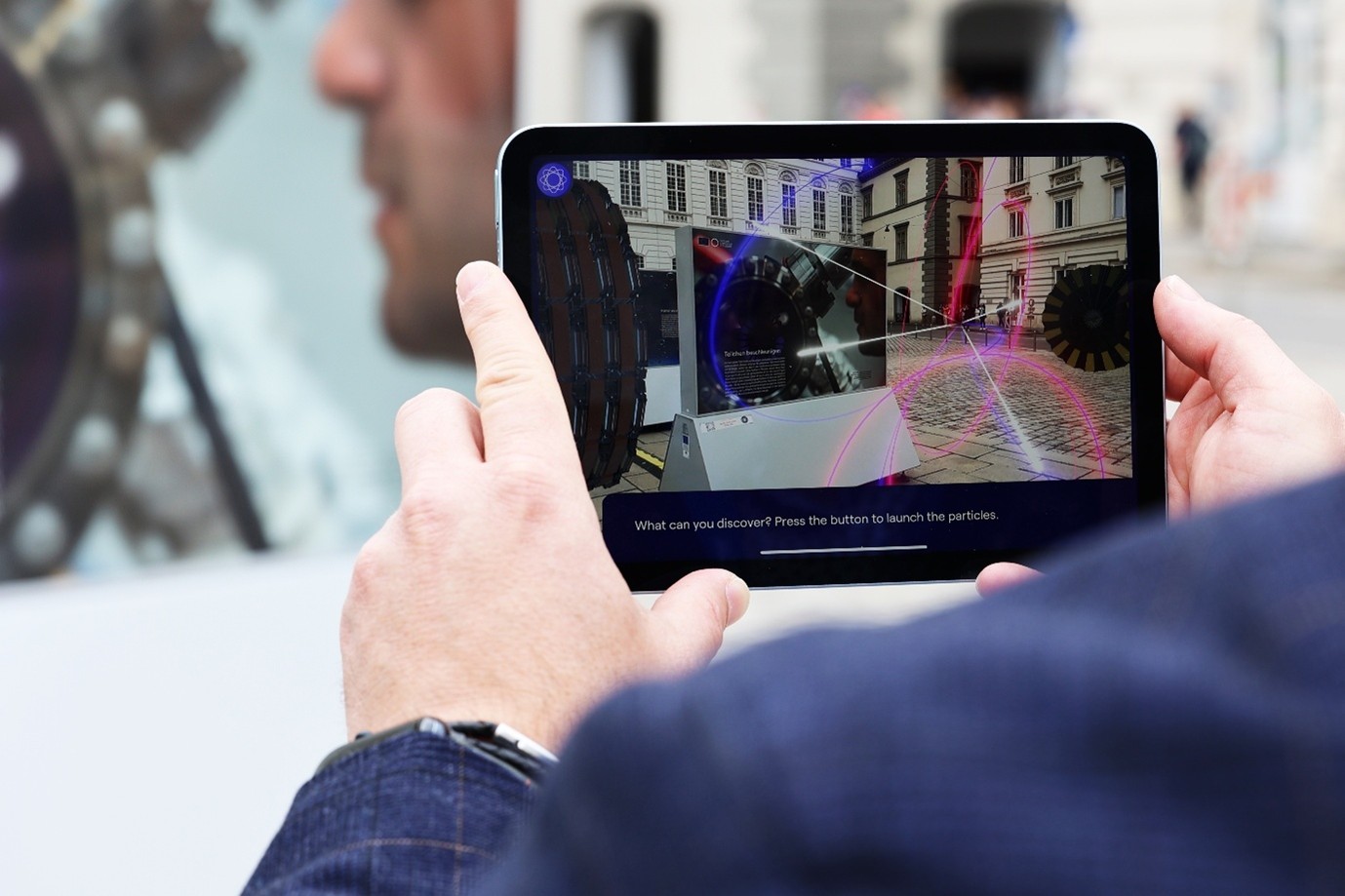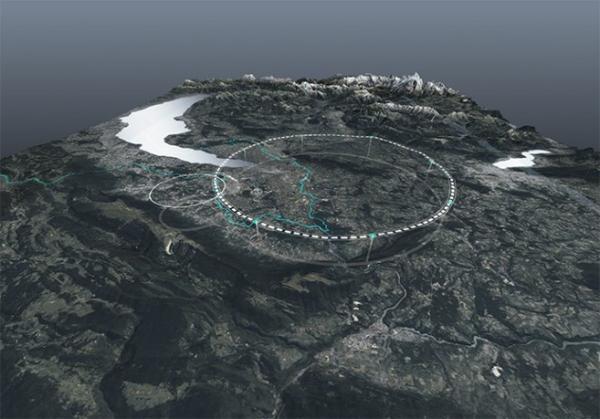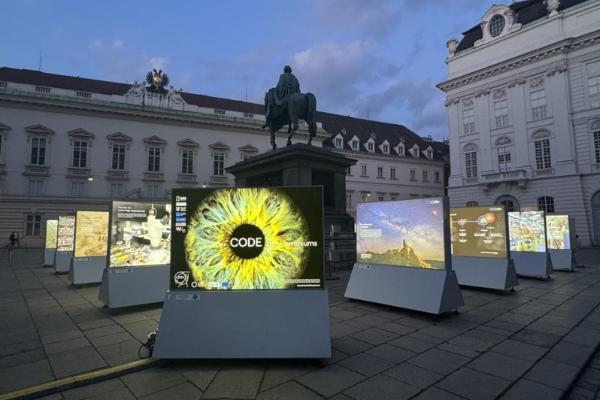Bringing particle accelerators to life through augmented reality

Accelerator science is a constantly evolving field. New technological advances allow large colliders – like the Large Hadron Collider (LHC) at CERN – to reach higher energies and discover new particles. Scientists are already discussing its predecessor - an even larger 15 billion Swiss franc supercollider 200 meters underneath the French and Swiss countryside.

The FCC (large circle, dashed outline) would be built close to its predecessor at CERN, the Large Hadron Collider (small circle). Credit: CERN
A large proportion of the cost will be covered by CERN, with additional financial contributions from CERN-membered European countries and others such as the United States and Japan.
Big Science, Bigger Questions
Why does it cost so much? Why do we still need to study particles like the Higgs boson—wasn’t it already discovered? Will the FCC create new jobs or industries? Could the FCC create black holes or other dangerous phenomena?
These questions - and many others - have sparked conversations in newspapers, online forums, and even over drinks at the local pub.
Augmented reality meets fundamental research
CERN and the University of Liverpool’s Quantum Systems and advanced Accelerator Research Group (QUASAR Group), based at the Cockcroft Institute, are putting public engagement at the heart of their research. Together with Polar Media and funded by the Future Circular Collider Innovation Study (FCCIS) they have developed an Augmented Reality App to help the public understand how fundamental research can lead to real-world innovations, from medical technologies to digital infrastructure.

“The Code of the Universe” exhibition on display in Vienna. (Credit: Future Circular Collider Study)
The “Code of the Universe App”, can be used at large events alongside the exhibition of the same name, or in home mode for classroom and workshop settings.
Upon launching the App, you are immediately absorbed in an entirely new world. This immersive moment serves as the perfect icebreaker, sparking curiosity and conversation - adaptable for both children and adults.
Each act of the App reinforces the excitement of discovery and the enduring mysteries of our universe. A true highlight is the ability to launch particles and witness your own collision. The result is a three-dimensional burst of motion trails and particles that fills your space with energy and motion.
-600x400.jpg)
The App sparked lively discussions among participants. (Credit: QUASAR Group / A.Welsch)
Fueling curiosity
Officially launched at FCC Week 2025 in Vienna, the App offered a memorable experience that sparked lively and diverse discussions among participants.
Public engagement was a key highlight during the week, with over 800 students and visitors taking part in activities at Vienna’s Planetarium and the Wiener Riesenrad. More than 350 attendees joined the public event “The Higgs Boson and Our Life” at the Austrian National Library, featuring CERN’s Director-General, the Vice President of the Austrian Academy of Sciences, and Austria’s European Climate Pact Ambassador. Complementing these events, the outdoor exhibition “Code of the Universe” remains on display in Vienna, inviting the public to explore the beauty of physics through art.
These outreach initiatives aimed to bridge the gap between cutting-edge accelerator research - traditionally reserved for experts - and the general public by making it accessible, relatable to the real world, and inspiring children and students to engage with the future of the FCC.
The app is available to download from the following link https://codeoftheuniverse.eu/